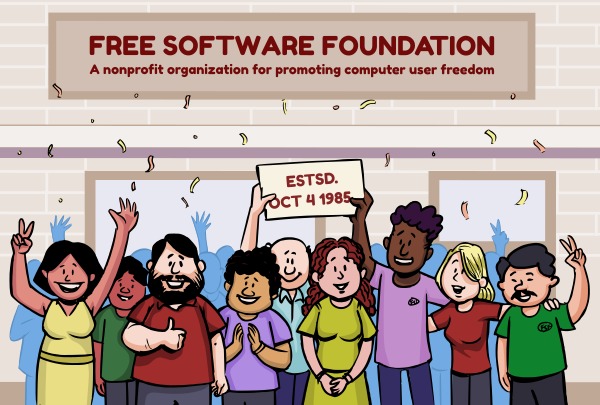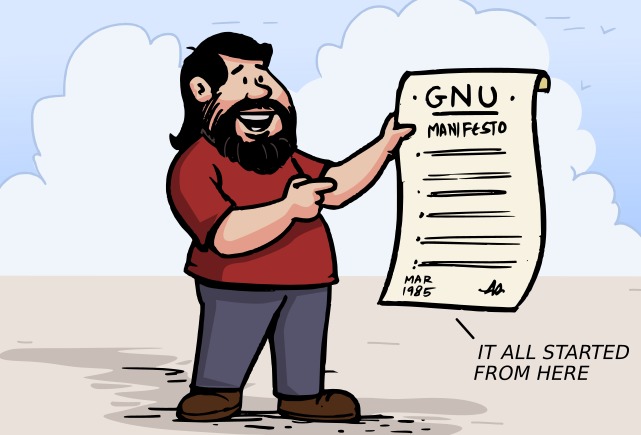The History of GNU: The Project That Pioneered Free Software
 Anish Agrawal
Anish Agrawal
In the early days of computing, software was primarily shared among developers, researchers, and enthusiasts. However, as the industry grew, proprietary software practices began to take hold, limiting access and control over the software that users could once freely modify and share. Enter the GNU Project—a revolutionary movement aimed at making software free and open for everyone. Today, we’ll explore GNU's roots, its guiding principles, and its impact on the tech world.
The Birth of GNU: A Movement for Free Software
In 1983, Richard Stallman, a programmer at the Massachusetts Institute of Technology (MIT), observed a troubling shift in the world of software development. Software that was once openly shared was now being restricted through licensing agreements, preventing users from accessing, modifying, and distributing the code. Stallman believed that this restricted innovation and placed limitations on both developers and end-users.
To counter this trend, Stallman announced the GNU Project in September 1983. GNU, which stands for "GNU's Not Unix," aimed to develop a free version of the Unix operating system, a popular OS known for its stability and flexibility. The name itself is a recursive acronym, an insider’s joke among programmers that reflected the project's open and inclusive philosophy.
Stallman's vision was not just technical but also deeply philosophical. He believed that software should grant users four essential freedoms:
Freedom to run the program for any purpose.
Freedom to study and modify the program to fit one’s needs.
Freedom to distribute copies of the program to help others.
Freedom to improve the program and release those improvements to the public.
These principles formed the backbone of what is now known as Free Software—software that respects users' freedom and community.

Developing the GNU System: Components and Challenges
The goal of the GNU Project was ambitious: to build an entirely free Unix-like operating system from scratch. Unix was chosen because it was a powerful, multi-user operating system, but one that was costly and had restrictions on usage. Stallman and the team began developing key components of the GNU operating system, including:
GNU Compiler Collection (GCC): A powerful compiler capable of handling multiple programming languages, which remains widely used today.
GNU Emacs: An extensible, customizable text editor that became a staple tool for programmers.
GNU Debugger (GDB): A debugging tool that allowed developers to test and troubleshoot their programs.
These components helped lay the foundation for the GNU system, but one major piece was still missing: the kernel. The kernel is the core of an operating system, managing communication between software and hardware. The GNU Project began developing a kernel named Hurd in 1990. However, the project faced technical challenges, and Hurd’s development slowed, delaying the completion of a fully independent GNU operating system.
The Rise of Linux and the GNU/Linux Debate
While the GNU Project was struggling to complete its kernel, another solution appeared on the scene. In 1991, Linus Torvalds, a Finnish computer science student, created the Linux kernel as part of his personal project to build a Unix-like system. Unlike Hurd, Linux quickly gained traction and evolved with the help of global contributors. Linux was licensed under the GNU General Public License (GPL), a software license developed by Stallman to enforce the four freedoms of free software.
The combination of the GNU tools and the Linux kernel resulted in a powerful and functional operating system, widely known today as GNU/Linux. This operating system gained popularity and has since been used in countless applications, from personal computers to servers, supercomputers, and mobile devices.
The name GNU/Linux recognizes the contributions of both the GNU Project and Linux to the open-source ecosystem. However, many still simply refer to it as "Linux," a point that has stirred debate within the community, with Stallman emphasizing the importance of acknowledging GNU’s role.
GNU’s Lasting Impact and the Open-Source Movement
The GNU Project’s influence extends beyond its code; it pioneered the free software philosophy that sparked the modern open-source movement. Stallman’s establishment of the Free Software Foundation (FSF) in 1985 further solidified GNU’s mission, providing a nonprofit organization to advocate for user freedom and support GNU development.
While the FSF and GNU project advocate “free software,” a term that stresses freedom over cost, other developers began to adopt the term “open source” in the late 1990s to emphasize practical benefits and appeal to commercial interests. This rebranding helped popularize free software principles among businesses, leading to widespread adoption of open-source software today.
Conclusion: GNU’s Legacy
The GNU Project fundamentally transformed the software industry by making freedom and accessibility a priority in software development. Without GNU, the software world might look very different—free software principles might not have gained the momentum they have today, and projects like Linux, which power the internet and modern computing, might not exist in their current form.
The impact of GNU resonates throughout the tech world. Its tools are still widely used, and its principles of freedom, collaboration, and accessibility continue to inspire developers around the globe. As we look to the future of software, GNU’s legacy reminds us of the value of user freedom and the power of community-driven development.
Subscribe to my newsletter
Read articles from Anish Agrawal directly inside your inbox. Subscribe to the newsletter, and don't miss out.
Written by
